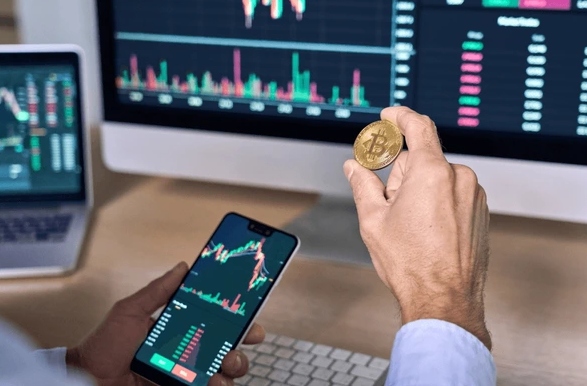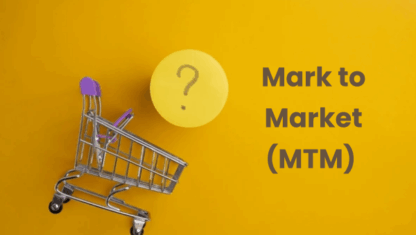
Ultima Markets App
Trade Anytime, Anywhere
Important Information
This website is managed by Ultima Markets’ international entities, and it’s important to emphasise that they are not subject to regulation by the FCA in the UK. Therefore, you must understand that you will not have the FCA’s protection when investing through this website – for example:
- You will not be guaranteed Negative Balance Protection
- You will not be protected by FCA’s leverage restrictions
- You will not have the right to settle disputes via the Financial Ombudsman Service (FOS)
- You will not be protected by Financial Services Compensation Scheme (FSCS)
- Any monies deposited will not be afforded the protection required under the FCA Client Assets Sourcebook. The level of protection for your funds will be determined by the regulations of the relevant local regulator.
Note: Ultima Markets is currently developing a dedicated website for UK clients and expects to onboard UK clients under FCA regulations in 2026.
If you would like to proceed and visit this website, you acknowledge and confirm the following:
- 1.The website is owned by Ultima Markets’ international entities and not by Ultima Markets UK Ltd, which is regulated by the FCA.
- 2.Ultima Markets Limited, or any of the Ultima Markets international entities, are neither based in the UK nor licensed by the FCA.
- 3.You are accessing the website at your own initiative and have not been solicited by Ultima Markets Limited in any way.
- 4.Investing through this website does not grant you the protections provided by the FCA.
- 5.Should you choose to invest through this website or with any of the international Ultima Markets entities, you will be subject to the rules and regulations of the relevant international regulatory authorities, not the FCA.
Ultima Markets wants to make it clear that we are duly licensed and authorised to offer the services and financial derivative products listed on our website. Individuals accessing this website and registering a trading account do so entirely of their own volition and without prior solicitation.
By confirming your decision to proceed with entering the website, you hereby affirm that this decision was solely initiated by you, and no solicitation has been made by any Ultima Markets entity.
I confirm my intention to proceed and enter this website Please direct me to the website operated by Ultima Markets , regulated by the FCA in the United KingdomHow to Scale a Cryptocurrency Exchange
To scale a cryptocurrency exchange, upgrade your servers, boost liquidity, follow regulations, improve user experience, and make sure the platform runs 24/7.
Scaling a cryptocurrency exchange is essential if you’re looking to compete with the big names like Binance or Coinbase. Whether you’re building from scratch or optimizing an existing platform, this guide breaks down what it really takes to scale efficiently, technically, operationally, and from a trader’s perspective.
But before that, let’s understand what a cryptocurrency exchange is.
What Is a Cryptocurrency Exchange
A cryptocurrency exchange is a platform where people can buy, sell, and trade digital currencies like Bitcoin and Ethereum. These platforms operate 24/7 and make it easy for users to exchange one crypto asset for another or convert crypto into traditional money. A cryptocurrency exchange lets people buy low, sell high cryptocurrency like Bitcoin or Ethereum. These exchanges are open all day, every day.
What Are the Primary Crypto Markets?
The primary crypto markets refer to the different ways digital assets are bought, sold, or traded:
- Spot Market – Instantly buy or sell actual cryptocurrencies at current market prices.
- Derivatives Market – Includes futures and options, where traders speculate on future prices without owning the actual asset.
- Decentralized Finance (DeFi) – Peer-to-peer platforms for swaps, lending, and yield farming, often without intermediaries.
- P2P Marketplaces – Traders buy and sell crypto directly with each other, usually using local payment methods.
Most crypto exchanges begin with the spot market, then scale into derivatives and DeFi offerings as user base and compliance capacity grow.
Knowing which market you focus on helps you build the right tools and legal setup. So now that you understand the meaning, next let’s explain what it means to scale a crypto exchange.
What Does It Mean to Scale a Crypto Exchange?
Scaling a crypto exchange means increasing its ability to handle more users, higher trading volume, and greater complexity without breaking down or lagging. As traffic grows, the platform must remain secure, fast, and reliable.
In simple words, think of your exchange like a shop. The more customers walk in, the more staff, cash registers, and inventory you need to keep up.
Core Areas to Scale Crypto Exchange
Scaling a cryptocurrency exchange isn’t just about getting more users. It’s about making sure your platform can handle growth smoothly, securely, and without crashes. Below are the key pillars every successful exchange needs to scale effectively:
Infrastructure (Back-End Performance)
Your infrastructure is the engine of the exchange. As more users join, your systems must handle:
- Real-time order matching
- Price updates across multiple pairs
- Heavy API usage from traders and bots
How to scale:
- Use cloud platforms like AWS or Google Cloud for elastic compute power.
- Implement horizontal scaling, meaning you can add more servers instead of upgrading just one.
- Use fast databases like Redis (for caching) and PostgreSQL (for transactional integrity).
Poor infrastructure leads to outages during high-volume trading, frustrating users and damaging trust.
Security & Compliance
As you scale, security threats grow. Exchanges are prime targets for hackers. Regulators also watch bigger platforms closely.
What to scale:
- Multi-layer protection (e.g., 2FA, cold wallets, DDoS mitigation).
- Global KYC/AML integration using providers like Jumio, Sumsub, or Chainalysis.
- Regular security audits and penetration testing.
One breach or legal violation can shut down your exchange or lead to massive fines.
Liquidity
Liquidity means users can buy or sell instantly without wild price swings. Low liquidity causes slippage, which deters serious traders.
How to scale liquidity:
- Partner with market makers who constantly provide bids and asks.
- Use liquidity aggregators to source depth from other exchanges.
- Launch incentive programs to attract active traders.
Liquidity is critical for trust and trader retention. No one wants to wait minutes for an order to fill.
User Experience (UI/UX)
A scalable exchange must serve both beginners and pros. This means:
- Easy sign-up and fast onboarding
- Clean interface for retail traders
- Advanced tools (order types, depth charts, trading bots) for experts
A complicated interface turns users away. A clean, responsive UX keeps them coming back

When Does the Crypto Market Open?
The crypto market never closes. It’s open 24/7, unlike traditional stock exchanges. However, volatility tends to rise during global trading sessions:
- Asia session (Tokyo/Hong Kong): Early liquidity
- London session: Highest daily volume
- New York session: Increased momentum
For better entries, align trades with major sessions and news events.
Buy Low, Sell High in Cryptocurrency
This is the classic strategy—buy when price dips, sell when it rises. Scaling your exchange means you must offer tools that help traders spot those opportunities:
- Real-time charts
- RSI and MACD indicators
- News feeds and sentiment trackers
How Old Do You Have to Be to Buy Cryptocurrency?
Most crypto exchanges require users to be at least 18 years old to comply with KYC regulations. In some regions, local laws may vary.
How Does Leverage Work in Crypto?
Leverage lets users borrow funds to open larger positions. For example, 5x leverage means a $100 deposit can control a $500 trade.
But it increases both potential profit and risk.
- Use leverage controls per user level
- Educate users with in-app tutorials
- Comply with local leverage limits
Example of Scaling a Cryptocurrency Exchange
Imagine your exchange starts with 1,000 users and basic spot trading. Here’s how scaling happens:
| Stage | User | Key Upgrade |
| Early | 1k-5k | Add market maker for liquidity |
| Mid | 5k-50k | API upgrade, database scaling |
| Pro | 50k+ | Multiple servers, compliance teams |
FAQ
What does it mean to scale a cryptocurrency exchange?
Scaling a crypto exchange means improving its infrastructure, liquidity, security, and user experience to handle more users and trades efficiently.
How do crypto exchanges make money?
Crypto exchanges earn through trading fees, withdrawal charges, spread markups, listing fees, and sometimes offering premium features or margin trading.
Does the crypto market ever close?
No, the cryptocurrency market operates 24/7, including weekends and holidays. It follows global demand cycles like Asia, London, and US trading sessions.
How old do you have to be to buy cryptocurrency?
Most exchanges require users to be at least 18 years old to comply with global KYC and anti-money laundering regulations.
Conclusion
Scaling your exchange isn’t just about technology. You need the right tools, people, safety, and features. With a clear plan, you can grow fast and compete with the biggest names in crypto.
By learning from platforms like Ultima Markets, future exchange operators can better understand what today’s crypto traders expect education, accessibility, security, and speed. These are the essential pillars for successfully scaling a cryptocurrency exchange.
Disclaimer: This content is provided for informational purposes only and does not constitute, and should not be construed as, financial, investment, or other professional advice. No statement or opinion contained here in should be considered a recommendation by Ultima Markets or the author regarding any specific investment product, strategy, or transaction. Readers are advised not to rely solely on this material when making investment decisions and should seek independent advice where appropriate.












